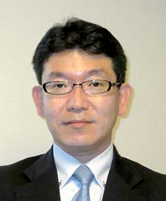Home > About Us > Sustainability Management > Sustainability Report > Sustainability Report 2010 > Third-Party Comment and Editorial Postscript
 Third-Party Comment and Editorial Postscript
Third-Party Comment and Editorial Postscript
| Comments on Reading the Kobe Steel Group's Sustainability Report 2010 |
In terms of visualization, the idea of starting the report by laying out the Kobe Steel Group's various technologies over a bird's eye view of the city provides a great overview that is extremely easy to follow, especially when combined with subsequent details of reductions in CO2 emissions and other specific achievements. It serves as an excellent reminder of the broad spectrum covered by the Kobe Steel Group's technology, from materials through to machinery. Sections outlining innovations in direct reduction and ironmaking processes, such as the MIDREX® Direct Reduction Process and the ITmk3® Process, give a real sense of the tremendous potential that the technologies could have in terms of tackling climate change globally, because of their huge impact and application overseas. Whereas most BtoB companies struggle to come up with succinct ways to show the public how their core operations contribute to society, this report serves as an example of how that can be achieved. The report clearly sets out the Kobe Steel Group's three-pronged vision for environmental management and systematically structures and outlines individual activities in line with that vision. Alongside the fact that the report clearly specifies the effects of individual products, technologies and services in terms of reducing environmental impact rather than merely outlining individual items, this reflects a sense of responsibility that goes beyond merely summarizing the group's approach and initiatives. The inclusion of photos of general managers from individual sites and their comments alongside the group's emissions data also creates the same strong sense of responsibility. I think this is an ideal way to convey to readers the level of commitment amongst frontline personnel, creating a real sense of presence. One area of the report in which there is room for improvement is the inclusion of viewpoints from a wide range of stakeholders. The report contains so much information on environmental management within the Kobe Steel Group and is so comprehensive in its coverage that it tends to focus too heavily on areas such as precision and reproducibility. As a result, diagrams and the general flow of the report are somewhat over-specialized, giving the impression that it could be quite difficult for members of the public to understand. To demonstrate the impact that the Kobe Steel Group has in terms of helping to reduce environmental impact in different ways throughout society, as illustrated at the start of the report, it would be a good idea to include sections featuring photos of stakeholders such as users and suppliers and their comments. In that respect, Mr. Sato's pledge to "adopt a barrier-free approach to working with communities and local people" in the opening interview is a good indication of the direction that the group needs to take in order to improve its reports in the future. Having evolved to such a great extent, I hope that this Sustainability Report will be put to good use in strengthening communication between the Kobe Steel Group and the general public. |
Editorial Postscript
| In publishing the Kobe Steel Group Sustainability Report 2010, we have paid close attention to visualizing data and incorporating employees' opinions and have made every effort to make the report easier to understand so as to bring us closer to our stakeholders. We have also included a number of new sections designed to convey the Kobe Steel Group's philosophy as clearly as possible, including the opening interview between freelance newscaster Mitsuyo Kusano and President Sato and the feature on helping to reduce CO2 emissions through our products and technologies. We have also instituted a readers' opinion and evaluation page at the end of the Report with the intent of fostering true two-way communication. We look forward to receiving further frank opinions from readers in our effort to make the Report more comprehensive. |
|
Secretariat and Publicity Department Kobe Steel, Ltd. |



